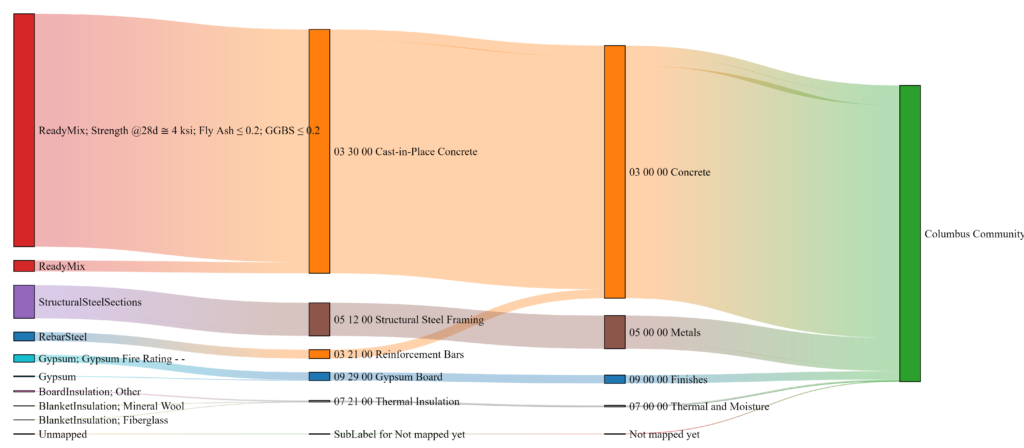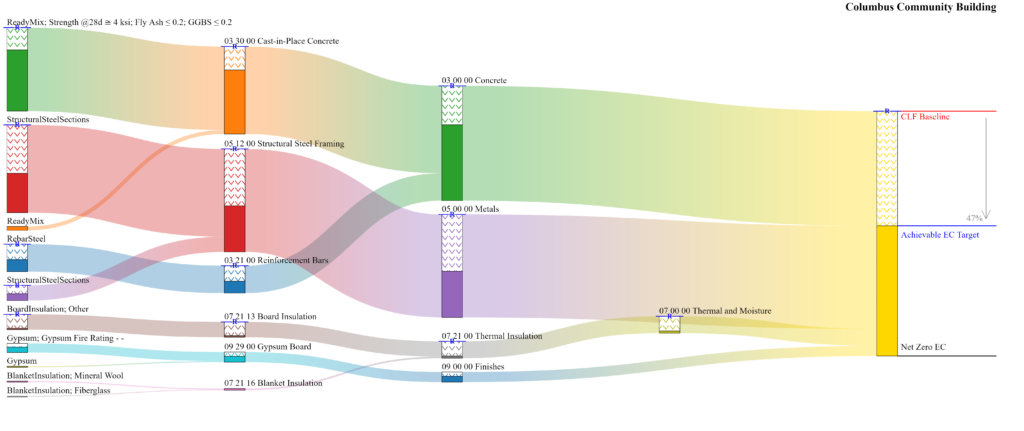CTE Spaces: Focusing on Community & Industry Needs
BVH has been involved in dozens of CTE projects in the past decade and we have seen overriding themes that are consistent markers of success…

A WBLCA measures the Global Warming Potential (GWP) of materials used to construct a building. In addition to accounting for operational energy C02 emissions, a building’s GWP is a measure of the embodied carbon from building materials. It accounts for the production of CO2 from extraction, manufacturing, transportation, installation, and maintenance of a material over the life of the building. Other categories evaluated in LCA are eutrophication, acidification, depletion of non-renewable energy, and smog formation. Eutrophication is the load of nutrients released into our waterways causing harmful effects[i]. Acidification measures the uptake of carbon into oceans increasing acidity and harm to various ocean wildlife[ii]. Nonrenewable energy sources come from the extraction of fossil fuels[iii]. Smog formation is air pollution and quantified as the amount of ground level ozone (O3)[iv] in WBLCA . Along with GWP these constitute the impact categories used in LEEDv4 Building Lifecycle Impact Reduction credit to earn points for certification.
BVH is using a range of carbon accounting tools to evaluate embodied carbon throughout design in order to reduce emissions. We see several states and federal projects requiring procurement of low-carbon materials and reductions in embodied carbon. Preparing our teams and equipping our clients with information on the impacts of embodied carbon over a building’s lifecycle helps make informed decisions and material choices. BVH’s practice and values are rooted in our philosophy of protecting and conserving historic and cultural resources avoiding carbon emissions from new construction. In addition, using WBLCA on new construction projects furthers our commitment to stewardship and people most impacted by climate change.

